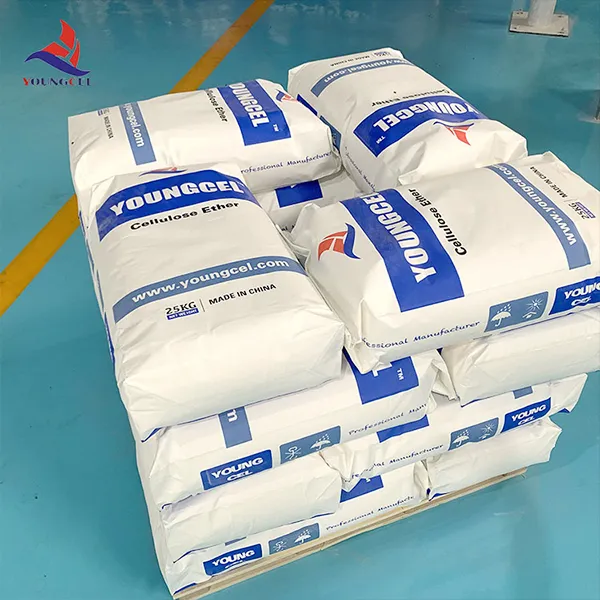Understanding HPMC (Hydroxypropyl Methylcellulose) Properties, Applications, and Implications
Hydroxypropyl methylcellulose (HPMC) is a versatile cellulose ether that has gained significant attention in various industries due to its unique properties and multifaceted applications. Derived from natural cellulose, HPMC is synthesized through the modification of cellulose with propylene oxide and methyl chloride. This modification imparts a range of properties to HPMC, making it suitable for numerous applications in pharmaceuticals, construction, food, and cosmetics.
Properties of HPMC
HPMC is characterized by its solubility in water and its ability to form viscous solutions. Its solubility is influenced by the degree of substitution and the molecular weight of the polymer, which can vary widely depending on the intended application. HPMC is known for its excellent film-forming capabilities, which allow it to create protective barriers on surfaces. This property is particularly useful in topical formulations and drug delivery systems.
Moreover, HPMC exhibits thermal stability and non-ionic characteristics, making it compatible with many other ingredients without undergoing chemical reactions. It also possesses emulsifying, thickening, and stabilizing properties, all of which enhance its functionality in various formulations. These attributes make HPMC an invaluable component in numerous products.
Applications of HPMC
Pharmaceutical Industry
In the pharmaceutical sector, HPMC is predominantly used as a binder, thickening agent, and controlled-release agent in tablet formulations. It ensures uniform distribution of active ingredients and enhances the stability of the final product. The controlled-release properties of HPMC allow for a sustained release of drugs, which can improve patient compliance and therapeutic efficacy. HPMC is also utilized in ocular solutions and gels due to its ability to maintain moisture and provide comfort to the eye.
Food Industry
hpmc methyl cellulos

In the food industry, HPMC finds applications as a food additive. It acts as a thickener and stabilizer, imparting texture and improving mouthfeel in products such as sauces, dressings, and dairy items. Additionally, HPMC is often used in gluten-free baking as a substitute for gluten, helping to improve the structure and elasticity of baked goods. Its approval by various food safety authorities, including the FDA, reinforces its safety for consumption.
Construction Industry
In construction, HPMC serves as an additive in cement-based products. Its water-retention properties are vital for maintaining moisture in mortars and plasters, which allows for better adhesion and workability. This characteristic is crucial for ensuring that the materials cure properly, leading to stronger and more durable constructions. Moreover, HPMC contributes to improved flow and leveling properties, essential for achieving high-quality finishes in construction applications.
Cosmetic Industry
HPMC is widely used in cosmetics and personal care products due to its emollient and emulsifying properties. It can be found in creams, lotions, and hair care products, where it enhances the texture and provides a smooth application. HPMC’s film-forming ability also contributes to the long-lasting effects of cosmetic formulations.
Implications for the Future
As industries continue to seek sustainable and safe alternatives to synthetic compounds, HPMC stands out due to its natural origin and biodegradable nature. Its versatility aligns with the growing demand for eco-friendly products in various sectors. Ongoing research is focused on enhancing the properties of HPMC for even more specialized applications, paving the way for innovative solutions in drug delivery systems, functional foods, and sustainable building materials.
Conclusion
In conclusion, hydroxypropyl methylcellulose (HPMC) is a remarkable compound with extensive applications across multiple industries. Its unique properties, safety profile, and versatility ensure its continued relevance in both traditional and modern formulations. As we move towards a more sustainable future, HPMC's role in various sectors is poised to grow, reflecting the increasing importance of environmentally responsible materials. Whether in pharmaceuticals, food formulation, construction, or cosmetics, HPMC will likely remain a cornerstone ingredient with significant potential for innovation.
-
The Application and Significance of Construction RdpNewsMay.19,2025
-
Industrial Grade HpmcNewsMay.19,2025
-
Building Coating Adhesive Building Coating Adhesive HpmcNewsMay.19,2025
-
Application Of Hpmc For Detergent For Detergent In DetergentsNewsMay.19,2025
-
Application Of Hpmc Cellulose In Cement-Based MaterialsNewsMay.19,2025
-
Application Of High Quality Hpmc For Construction In The Field Of ConstructionNewsMay.19,2025




